We were fortunate enough this spring to spy a pair of half-collar doves checking out possible nesting sites in the rolled-up back deck rain curtains of the vacant steel trawler next door. The pair spent three days investigating the various nooks and crannies provided by the well-worn canvas and plastic hanging from the roof of the back deck, before deciding upon one site that gave protection from the predominant winds (often 15-23 knots this month), was hidden from casual inspection, and best of all for us, provided easy viewing into the pair’s activities.

Construction of the nest took place over three days, as the male made endless flights afield, returning each time with an offering of nesting material which the female inspected carefully. His bit of twig, moss, twine, etc., was then either accepted and incorporated into the mezzanine-level nest, or thrown vehemently to the deck. I felt a little bad for the male every time he brought his hard-won submission only to have it rejected with seeming disgust. The female, meanwhile, spent her time arranging and rearranging the nesting material into a configuration she considered suitable.
Once the nest was completed, the female laid her eggs. They were not visible to us, but bird books tell us that two are usually laid. The male and female took turns incubating the eggs. At the end of the nesting shift, if the relieving parent was late, the sitting dove would begin voicing louder and hoarser coos. “Hurry up, I’m hungry and I have to go the toilet”. Bird books report that the sitting parent will not “go” while on the nest.
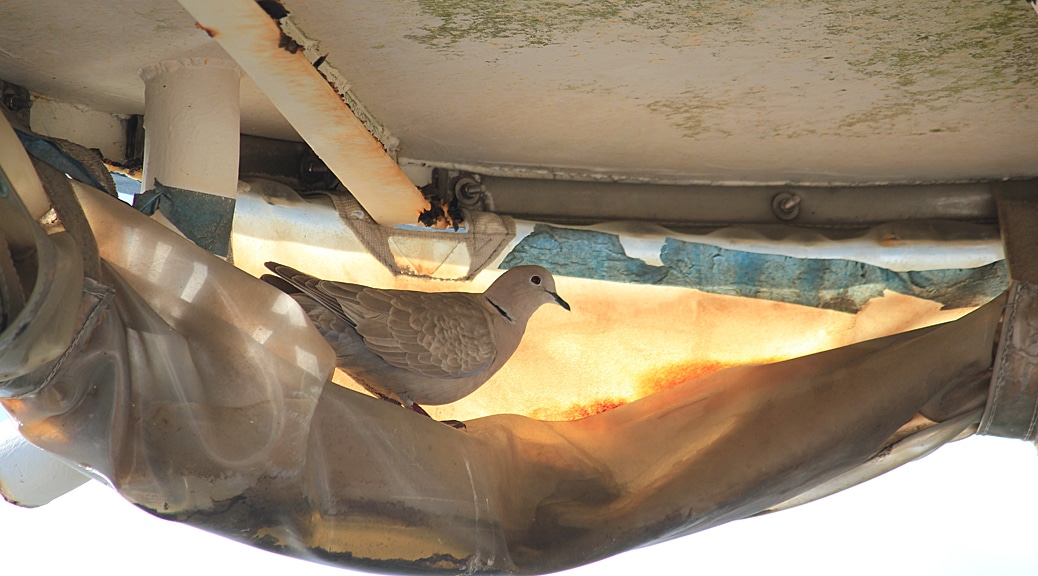
On the 18th day of nesting, one baby dove emerged and hours later, his sibling. We promptly named them Castor and Pollux. The parents took turns feeding them “crop milk” which is a fortified secretion (full of everything baby doves need) from the parent’s crop, a gland in the throat. So, the baby feeds by putting its beak in the parent’s mouth, and the crop milk is regurgitated.
This food apparently keeps the nestlings satisfied for much longer than the berries and bugs that the Kingbird babies ate. (see story on Kingbird Family) The Kingbirds foraged without ceasing for offerings to feed their voracious hatchlings, while the half-collar dove parents spent long periods of time away from the nest once Castor and Pollux had been fed. The behavior of the hatchlings was strikingly different as well. The Kingbirds peeped hungrily almost all the time. In contrast the dove twins crouched quietly in a hiding posture for hours. Once a parent arrived and assumed the feeding stance, then, and only then, would we hear them voice a few quiet whistles.

We were amazed at how fast they grew:
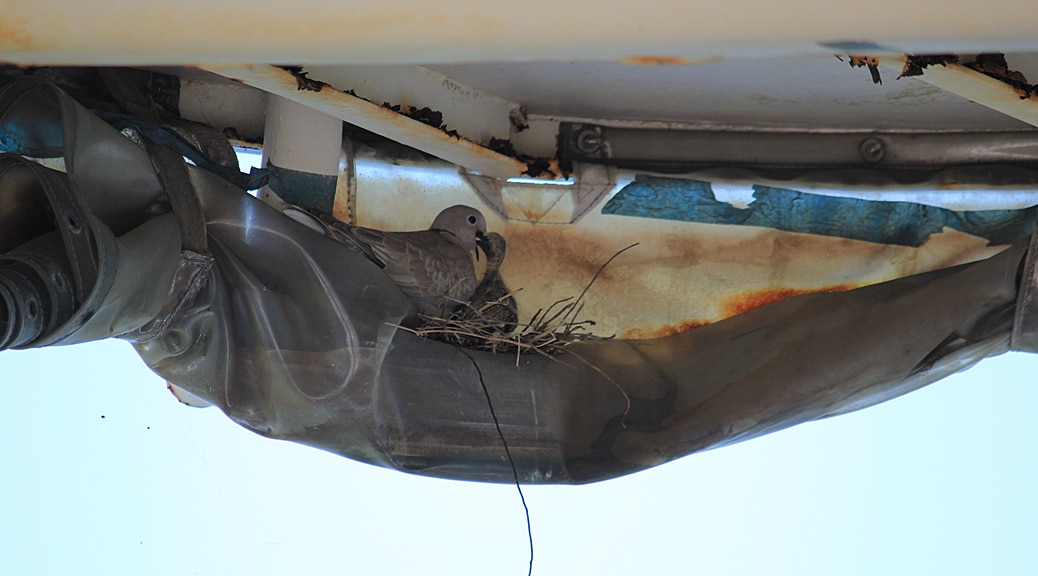
From the size above to the size below in 8 days.
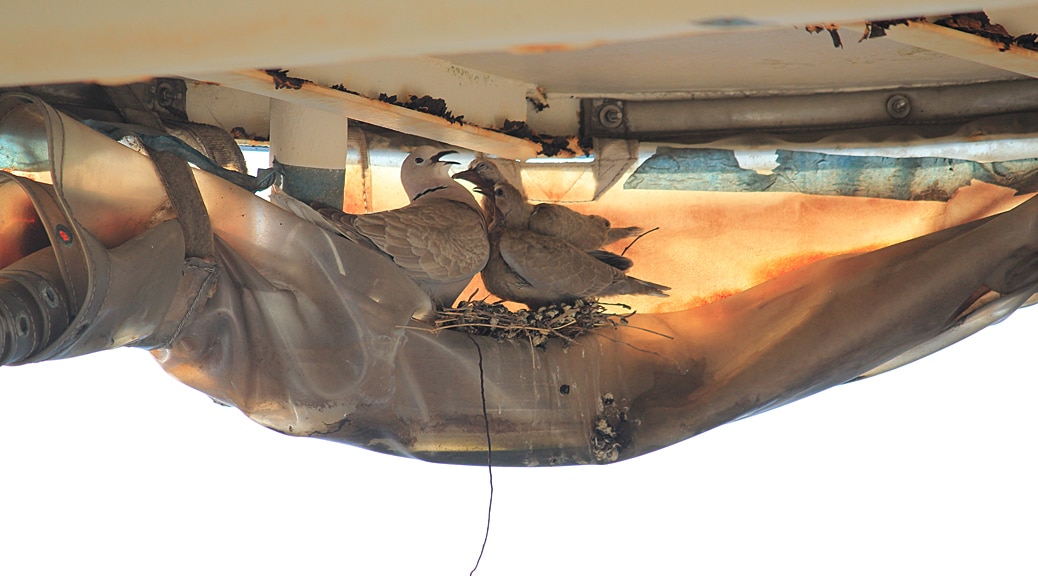
Before long Castor and Pollux had adult feathers coming in, very itchy we suspect, given the amount of time they spent grooming, rearranging, and scratching themselves. Apparently, each adult feather emerges in a “sheath” which the nestlings remove. These behaviors were interspersed with wing flappings, neck stretchings, and half-steps out of the nest. The parents rewarded and encouraged these behaviors by cooing to the pair from a tantalizingly near position on the boat’s safety rail. They were almost ready for flight.
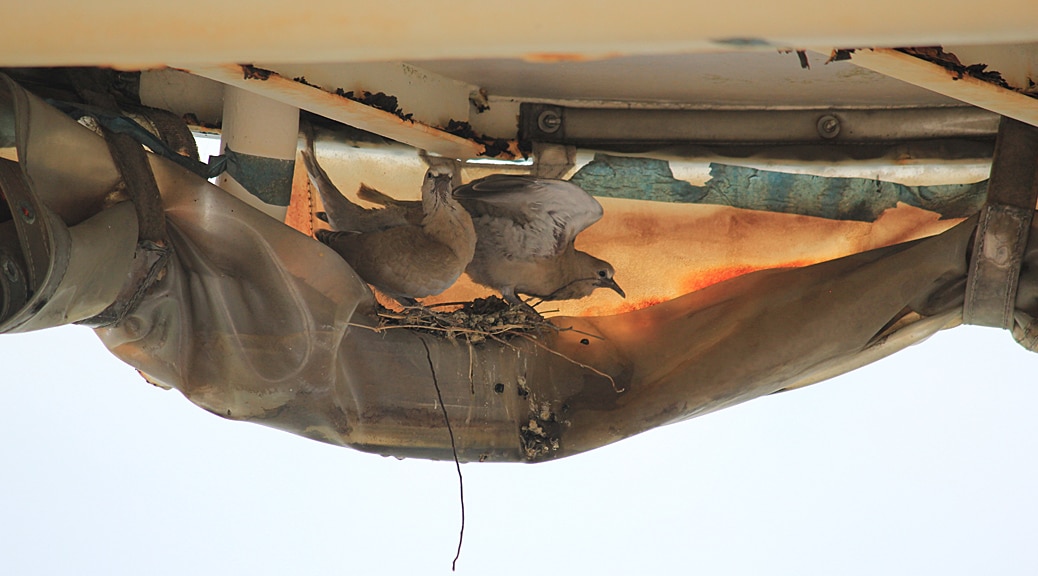
Finally on day 22, Castor took the leap. We came back from errands to see Pollux alone in the nest, looking somewhat dejected. Later that day, the mother dove and Castor flew back to the boat, Castor flubbed the safety rail landing and settled for an easier spot on the boat deck carpet. Both encouraged Pollux to fly. Mom fed him briefly and then called to him from the rail. Castor fluttered about, showing off his new skills.
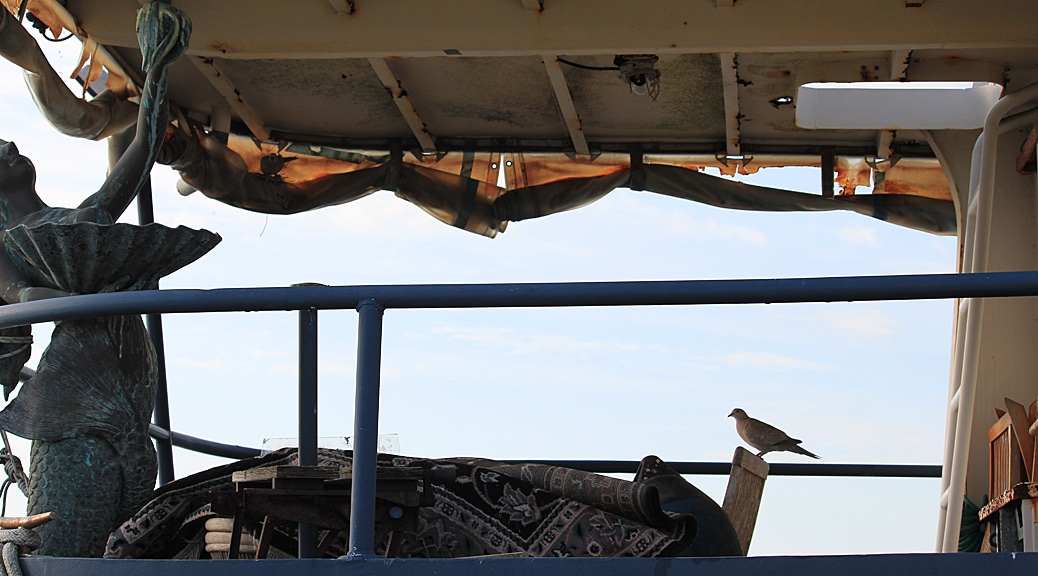
Pollux flapped his wings and made as if to take off numerous times, but lacked the nerve and finally hunched down in the nest in the hiding posture, as if depressed. Castor then flew back up to the nest and snuggled him, as if in consolation.
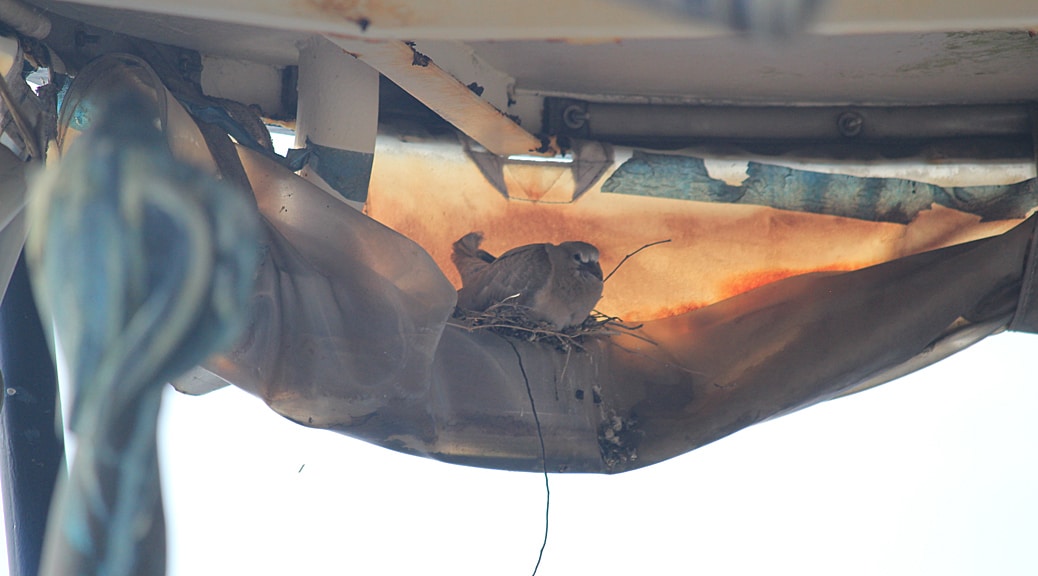
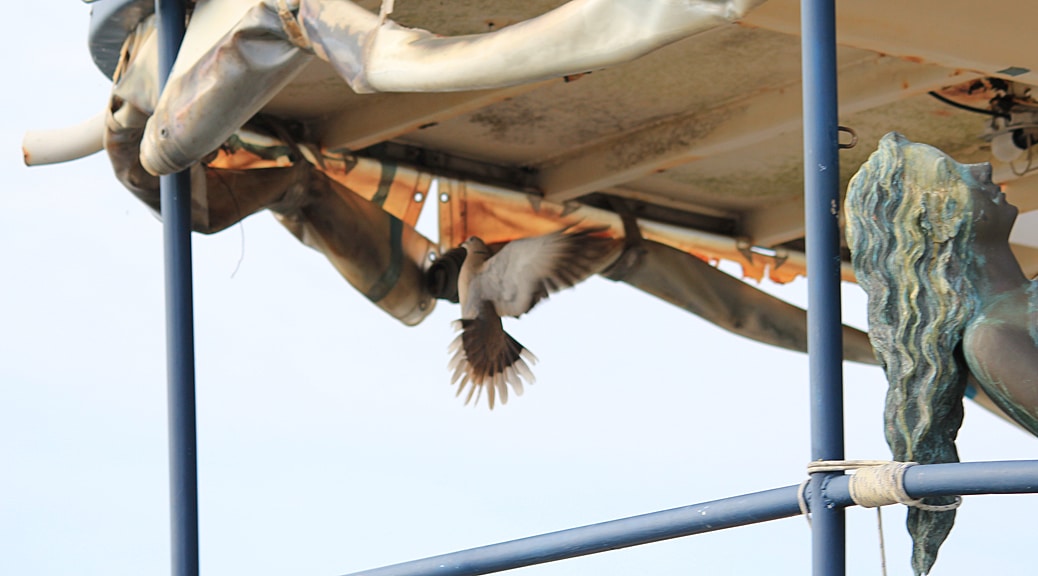
Pollux fledged the next day, although Castor is still the more accomplished flyer. The family continues to return to the nest, but less and less often. Sometimes we return to the boat to see the twins snoozing, sometimes there is an empty nest. We do catch sight of the family all over the marina. We’ll be alerted by a soft “Coo coo” and look up to see the parents and the babies on the spreaders or sail cover of a nearby boat. Father dove seems to be the navigator. When the family is grouped, he will decide on a new destination and take off. Mother will follow with Castor on her tail. Pollux will pace around a little, until the lack of proximity to his family is more bothersome than his flight anxiety, and he will follow.
It is unclear from our readings whether wild Half-Collar doves reuse their nests. Apparently, they do in captivity. We have read that they may produce multiple clutches of eggs each year. Perhaps if we are fortunate we may see new nestlings next door this summer.

4 Responses
Just delightful! We have cardinals that visit every spring. Father brillant in red and mother subdued in brown and a dirty red. Just watching their flight is enjoyable. Patience is needed in early morning to spy them just a red dot sitting in the trees.
I would love the chance to see baby cardinals close up! It is a thrill, but not a surprise, to see that birds have complex and close family relationships. It’s hard not to ascribe human feelings and motives to their actions. It is so very obvious that they have distinct emotional lives. Hope you are enjoying all the spring creatures.
Excellent! I was watching the Canada Geese couple at Landover Metro who built a nest. I saw one baby once but then nothin’. I don’t know that Canada Geese are as responsible as your doves!
Glad you liked the post. Sorry about your vanished gosling. The Canadian Geese we had at the marina in Maryland were very fierce in defense of their young. There were several occasions when the hatchlings were grazing in front of the piers, and nobody could get to their boats till they moved off because Momma and Poppa would attack. However, I cannot imagine what weird predators might be lurking around the Metro…